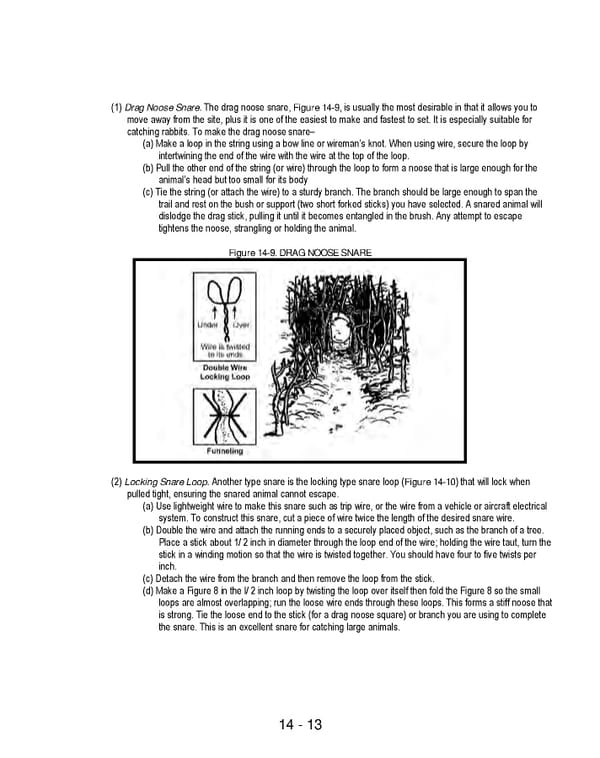14 - 13 (1) Drag Noose Snare. The drag noose snare, Figure 14-9, is usually the most desirable in that it allows you to move away from the site, plus it is one of the easiest to make and fastest to set. It is especially suitable for catching rabbits. To make the drag noose snare– (a) Make a loop in the string using a bow line or wireman’s knot. When using wire, secure the loop by intertwining the end of the wire with the wire at the top of the loop. (b) Pull the other end of the string (or wire) through the loop to form a noose that is large enough for the animal’s head but too small for its body (c) Tie the string (or attach the wire) to a sturdy branch. The branch should be large enough to span the trail and rest on the bush or support (two short forked sticks) you have selected. A snared animal will dislodge the drag stick, pulling it until it becomes entangled in the brush. Any attempt to escape tightens the noose, strangling or holding the animal. Figure 14-9. DRAG NOOSE SNARE (2) Locking Snare Loop. Another type snare is the locking type snare loop (Figure 14-10) that will lock when pulled tight, ensuring the snared animal cannot escape. (a) Use lightweight wire to make this snare such as trip wire, or the wire from a vehicle or aircraft electrical system. To construct this snare, cut a piece of wire twice the length of the desired snare wire. (b) Double the wire and attach the running ends to a securely placed object, such as the branch of a tree. Place a stick about 1/ 2 inch in diameter through the loop end of the wire; holding the wire taut, turn the stick in a winding motion so that the wire is twisted together. You should have four to five twists per inch. (c) Detach the wire from the branch and then remove the loop from the stick. (d) Make a Figure 8 in the l/ 2 inch loop by twisting the loop over itself then fold the Figure 8 so the small loops are almost overlapping; run the loose wire ends through these loops. This forms a stiff noose that is strong. Tie the loose end to the stick (for a drag noose square) or branch you are using to complete the snare. This is an excellent snare for catching large animals.
 Ranger Handbook Page 260 Page 262
Ranger Handbook Page 260 Page 262